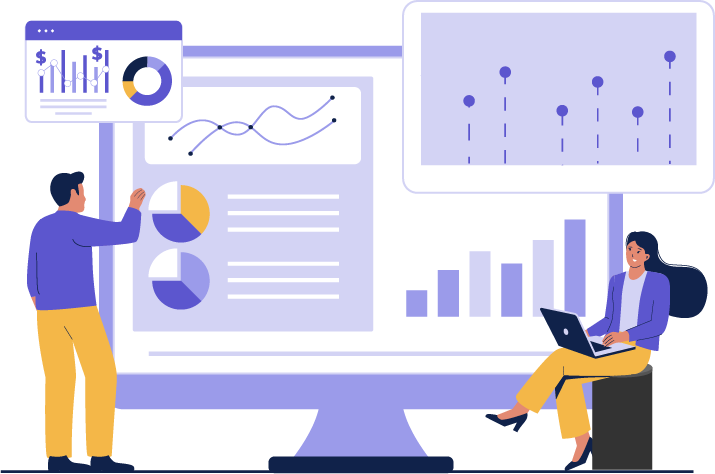Imagine this: Your IT team has invested in cutting-edge observability tools to keep systems running smoothly. But does that imply you are following observability best practices?
As your business grows, so does the flood of logs, traces, and metrics—along with a skyrocketing cloud bill. What started as a way to gain better visibility is now a major expense, and suddenly, you’re asking: Are we paying too much for too little value?
This challenge is becoming all too common. While observability is essential for identifying performance bottlenecks and ensuring reliability, unchecked data collection and storage costs can make it a financial burden rather than an enabler.
Let us break down why observability costs spiral out of control—and how you can take back control without sacrificing performance.
The Growing Challenge of Observability Costs
Why Observability Costs Keep Climbing
Observability provides deep insights into system health, user behavior, and potential issues. However, the price tag often grows for reason like:
Data Overload – IT teams, aiming for comprehensive visibility, often collect every possible log, trace, and metric, assuming more data equals better insights. However, in reality, only a fraction of this data is actionable, while the rest contributes to unnecessary costs and operational inefficiencies. This is the hidden cost of observability.
High Storage and Processing Expenses – Cloud-based observability platforms charge based on data ingestion and storage, making large-scale observability expensive. For example, an organization ingesting 5TB of log data per month at a rate of $0.50 per GB could face a monthly bill of $2,500 just for ingestion. If data retention is required for compliance, storing this data for 12 months at $0.10 per GB could add another $6,000 per year. Without careful data filtering and retention policies, costs can quickly spiral out of control.
Complex Pricing Models – Many observability platforms have complex pricing models that factor in data volume, query execution, and feature usage, making cost predictions challenging. For example, a mid-sized IT team may assume a stable monthly cost, only to see unexpected increases when query execution costs spike—such as when increasing dashboard refresh rates from every 10 minutes to every 1 minute, which can drive up compute costs by 50%. With dynamic pricing tiers and hidden surcharges, teams often struggle to anticipate their true expenses.
Inefficient Tool Utilization – IT teams often get excited about a new monitoring tool and actively use it at first, but interest wanes over time. Without proper integration and optimization, they either layer on additional observability tools or neglect to fine-tune data collection settings, leading to tool sprawl and unnecessary costs.
Observability Best Practices: Smarter, More Sustainable Observability
So, how do you rein in costs without losing visibility? Here are some practical steps:
1. Set Clear Data Retention and Filtering Policies
Define clear data retention policies to store only high-value data for extended periods while archiving or deleting redundant information.
Filter out low-value telemetry data before ingestion to reduce storage and processing costs.
2. Automate Anomaly Detection
Implement machine learning-based anomaly detection to monitor only significant deviations instead of continuously tracking every metric.
3. Right-Size Your Observability Stack
Assess your observability tools and scale down unnecessary features or subscriptions. Find a single solution that replaces multiple antiquated and unused tools.
Optimize dashboards and alerts to focus on critical metrics, avoiding alert fatigue and excessive computational costs.
4. Aggregate and Sample Data Intelligently
Instead of collecting data at the highest granularity, use aggregation techniques to reduce storage needs. Apply trending techniques to metrics for long-term storage.
Implement sampling strategies where detailed data is collected only for critical transactions or anomalies.
5. Monitor and Adjust Costs Regularly
Continuously review observability costs and usage to identify optimization opportunities.
Set up budgets and alerts to track expenses and prevent unexpected cost overruns.
Observability That Works for You
Observability is essential for maintaining system health and ensuring seamless digital experiences. However, lack of observability best practices can lead to unsustainable costs. By implementing smart data retention policies, automating anomaly detection, and right-sizing observability solutions, organizations can achieve a balance between cost efficiency and system reliability.
In today’s data-driven world, organizations face a critical challenge—how to achieve deep observability without overwhelming costs or unsustainable resource consumption. eG Enterprise provides the perfect balance, delivering end-to-end visibility, intelligent automation, and cost-effective monitoring that aligns with modern business needs.
Unlike traditional monitoring tools that generate excessive data without actionable insights, eG Enterprise uses AIOps observability to cut through the noise, pinpoint root causes, and optimize IT performance. With its unified approach, organizations can reduce tool sprawl, lower cloud, and infrastructure costs, and enhance sustainability by streamlining resource usage.
From cloud-native environments and hybrid infrastructures to digital workspaces like Citrix, Azure Virtual Desktop (AVD), and Microsoft 365, eG Enterprise provides comprehensive, real-time observability—ensuring performance, availability, and efficiency without unnecessary overhead. Together with Observability best practices, you can increase ROI, with less to no hassle at all.
eG Enterprise is an Observability solution for Modern IT. Monitor digital workspaces,
web applications, SaaS services, cloud and containers from a single pane of glass.
Calculate how much you can save with eG Enterprise Observability Solution. Check your ROI instantly.

 Meet Gita Rao-Prasad, a seasoned marketing leader with a passion for driving global go-to-market strategies and enhancing customer experiences. Currently serving as the Vice President of Marketing at eG Innovations, Gita plays a pivotal role in driving awareness and adoption among key stakeholders.
Meet Gita Rao-Prasad, a seasoned marketing leader with a passion for driving global go-to-market strategies and enhancing customer experiences. Currently serving as the Vice President of Marketing at eG Innovations, Gita plays a pivotal role in driving awareness and adoption among key stakeholders.